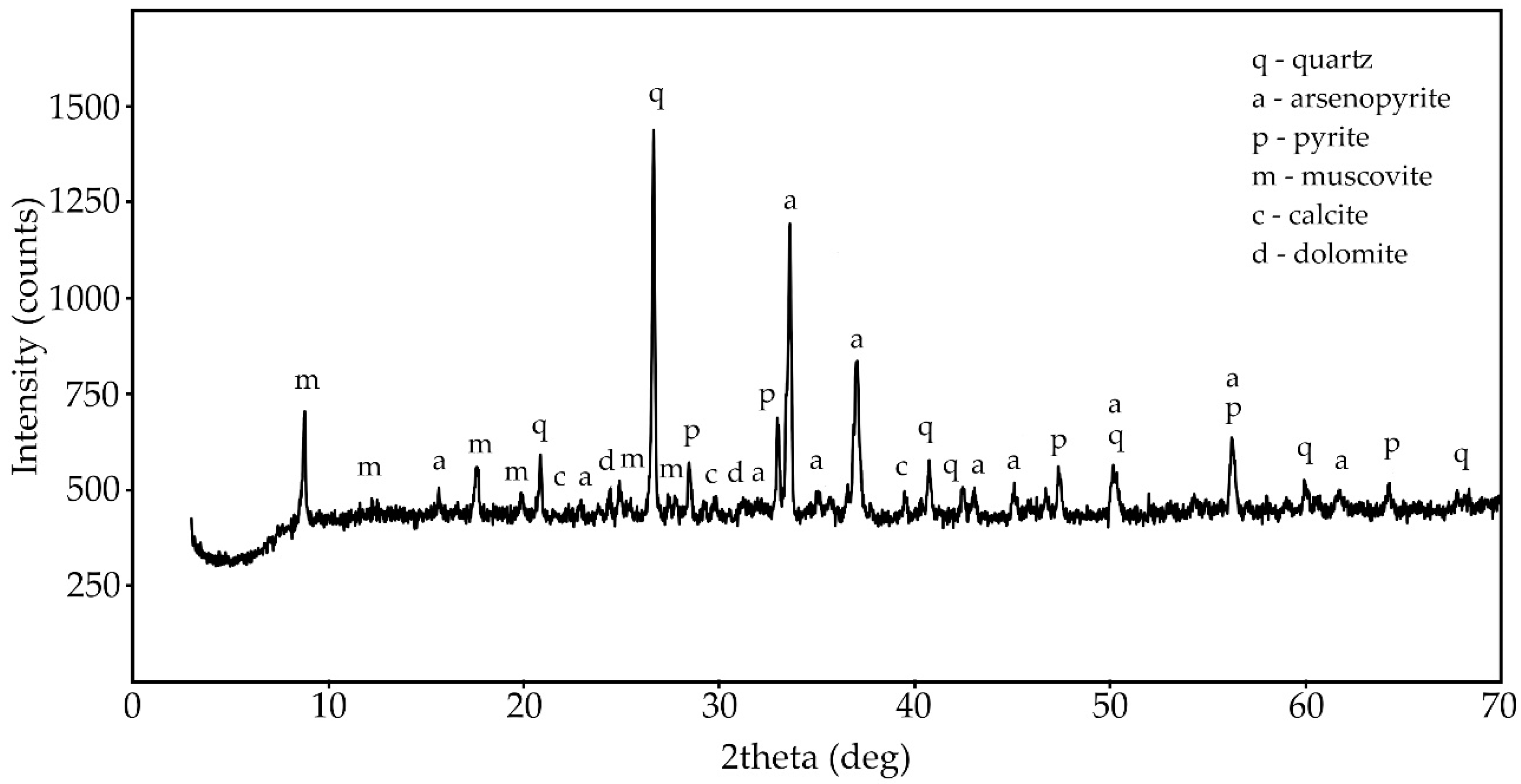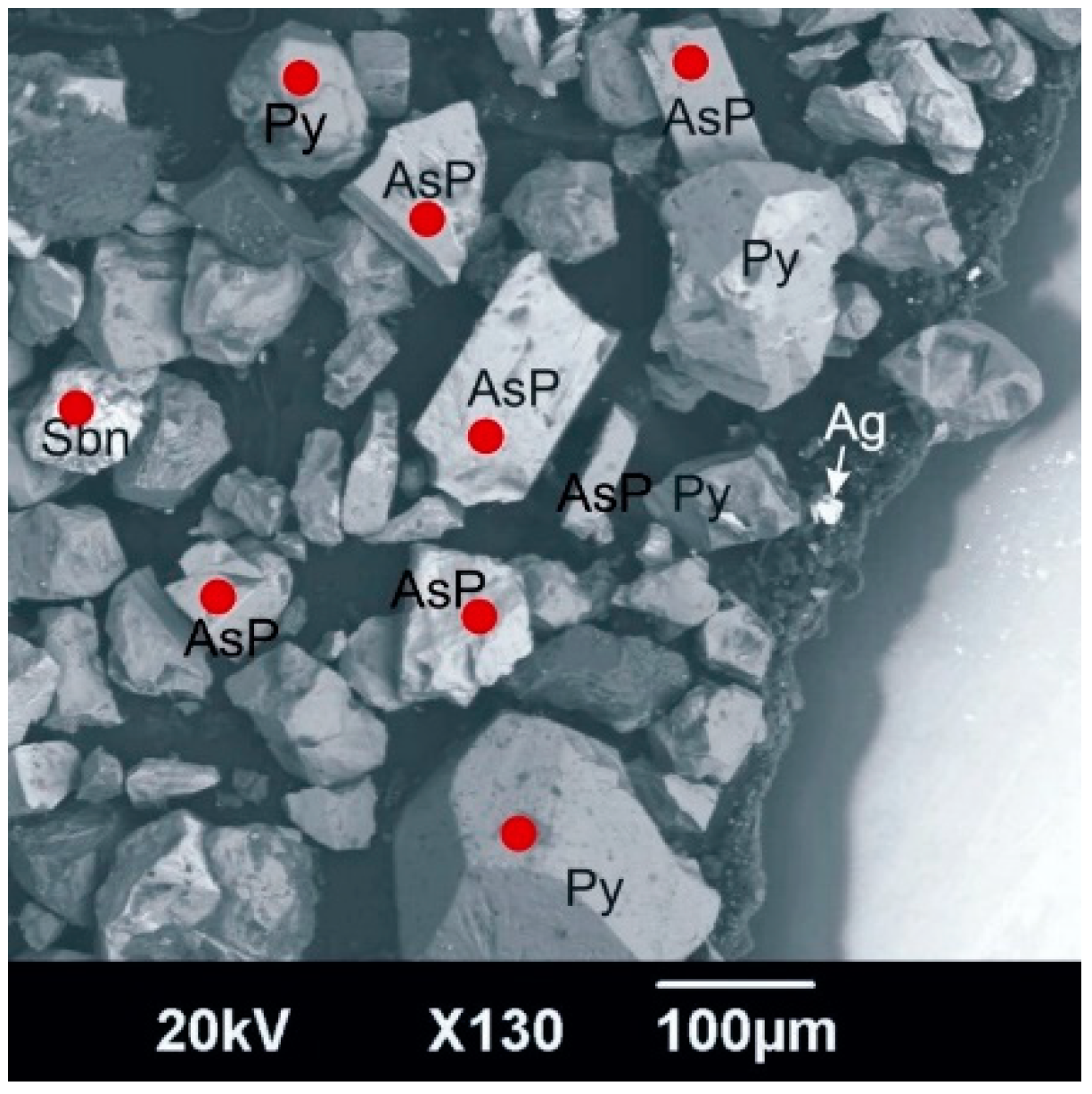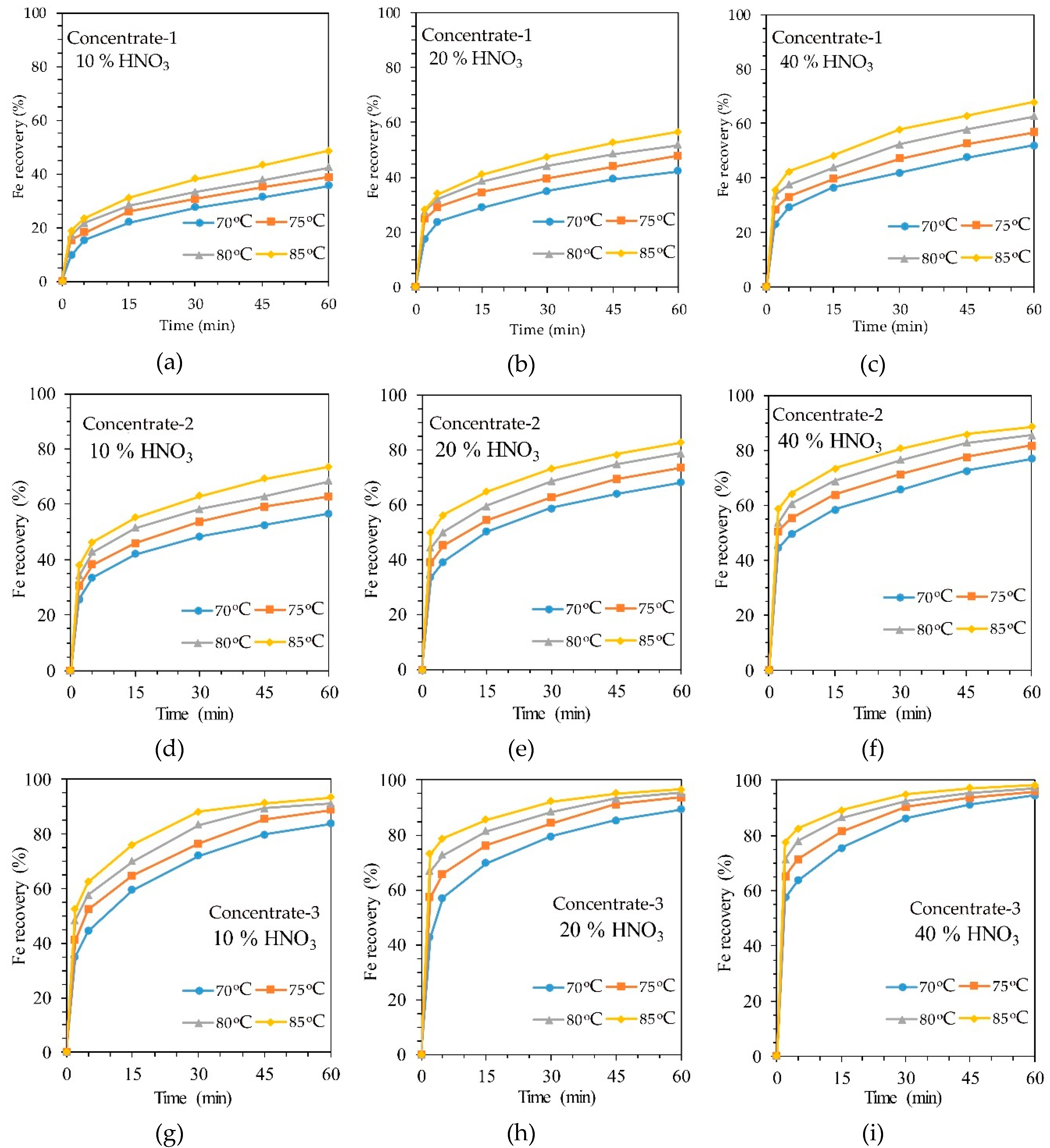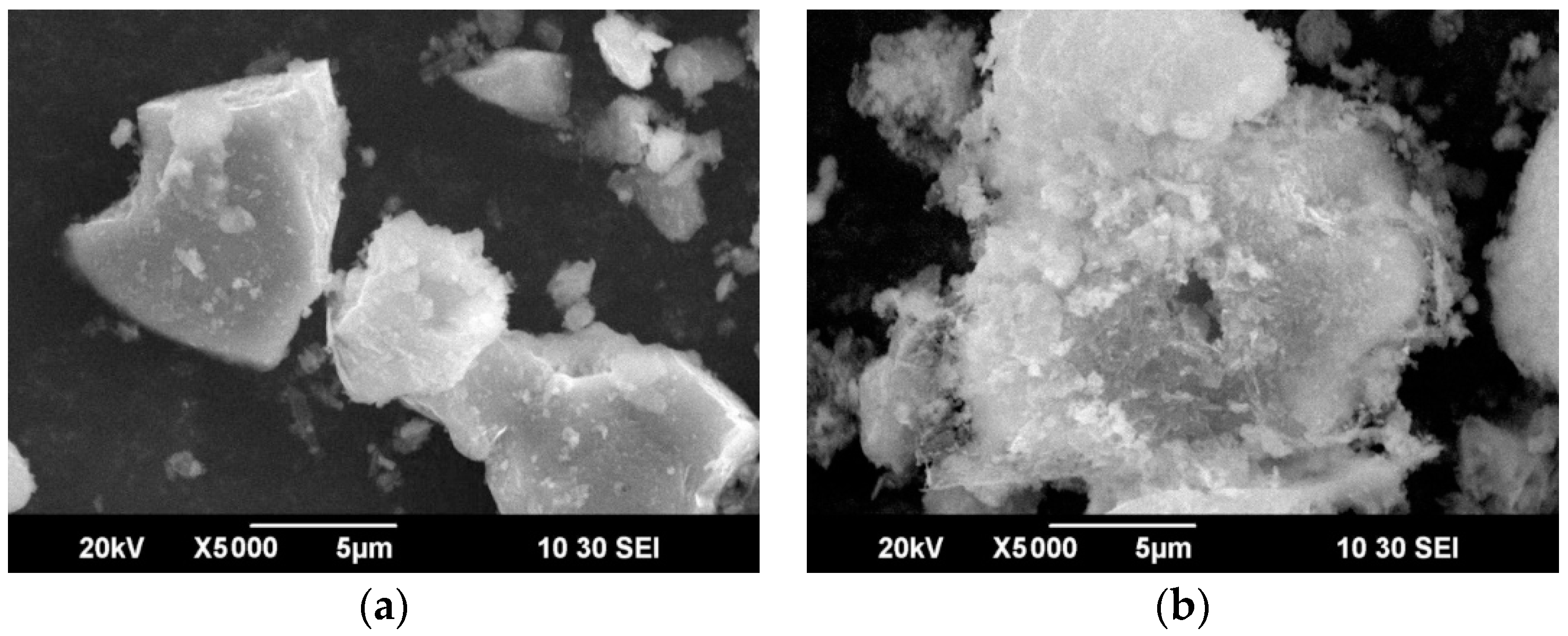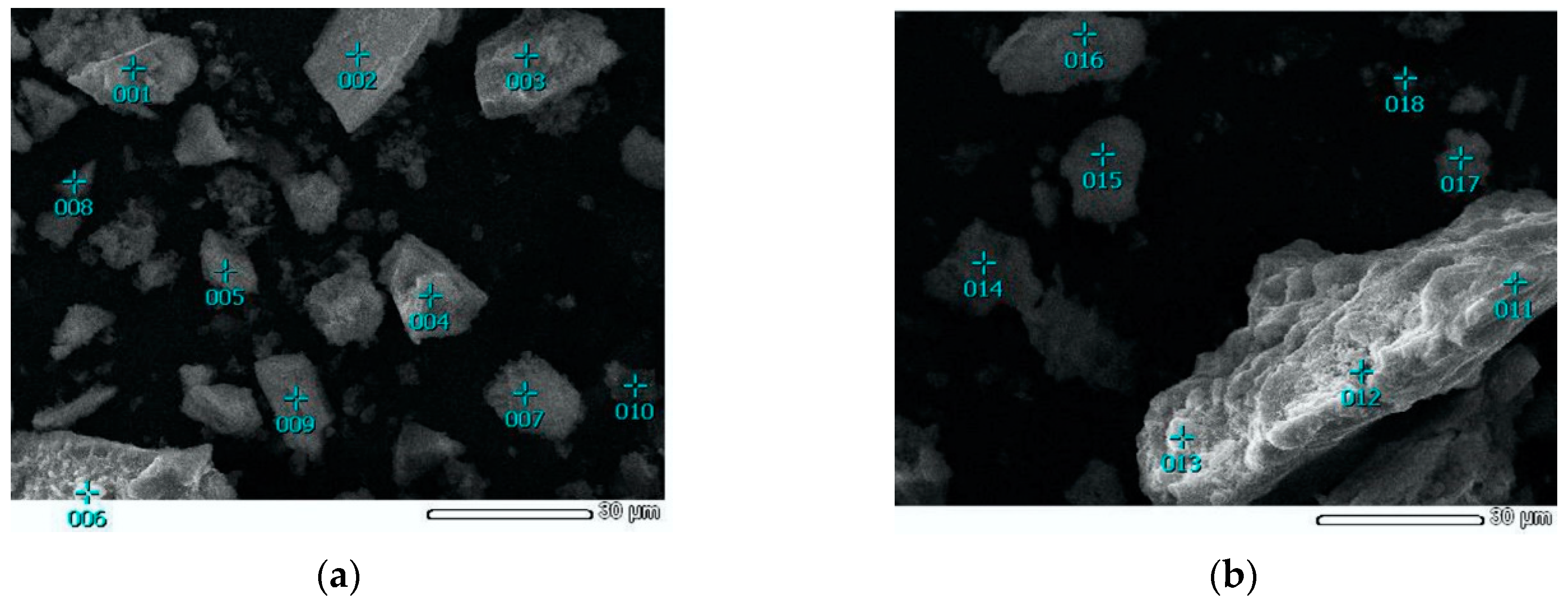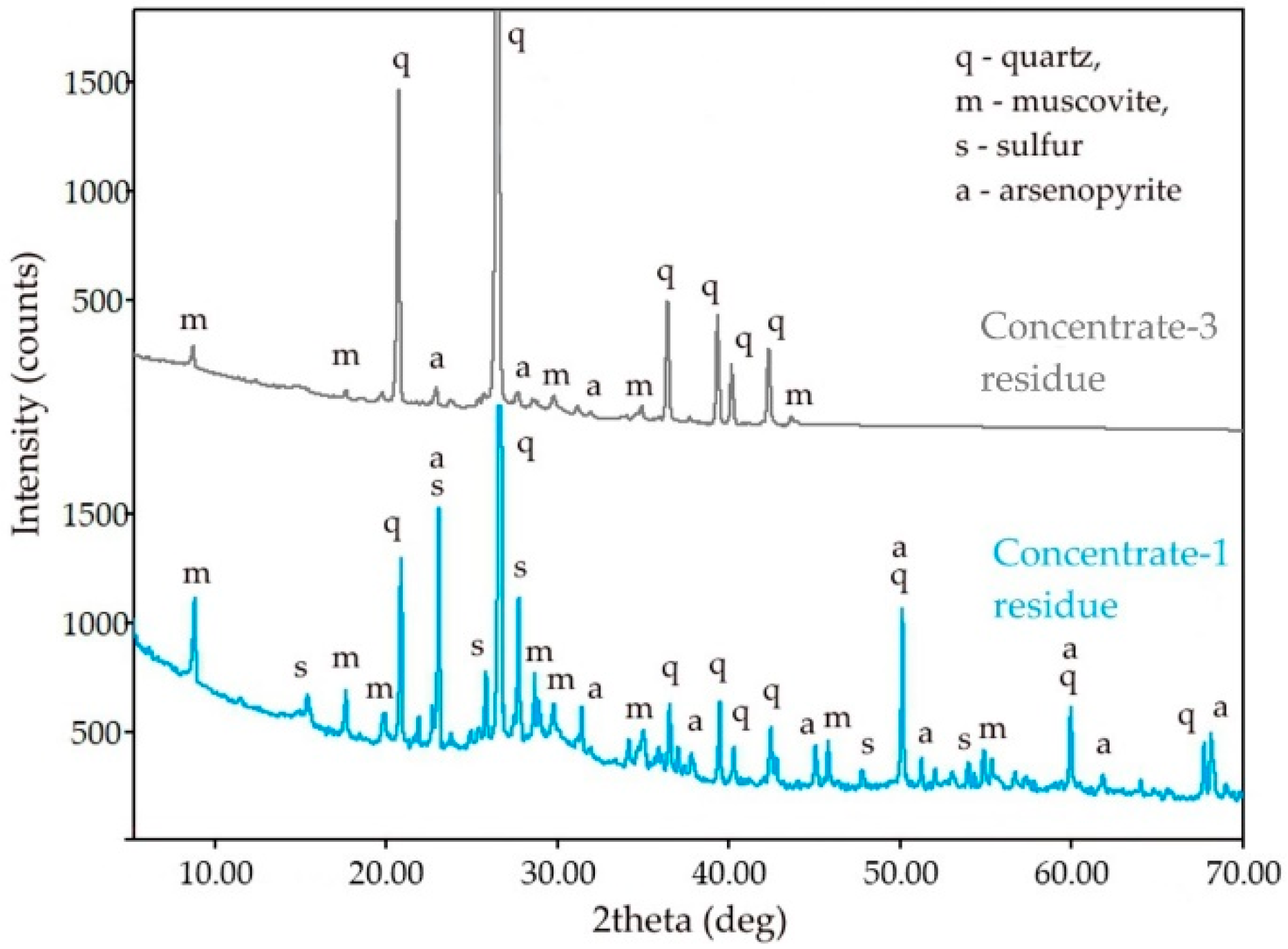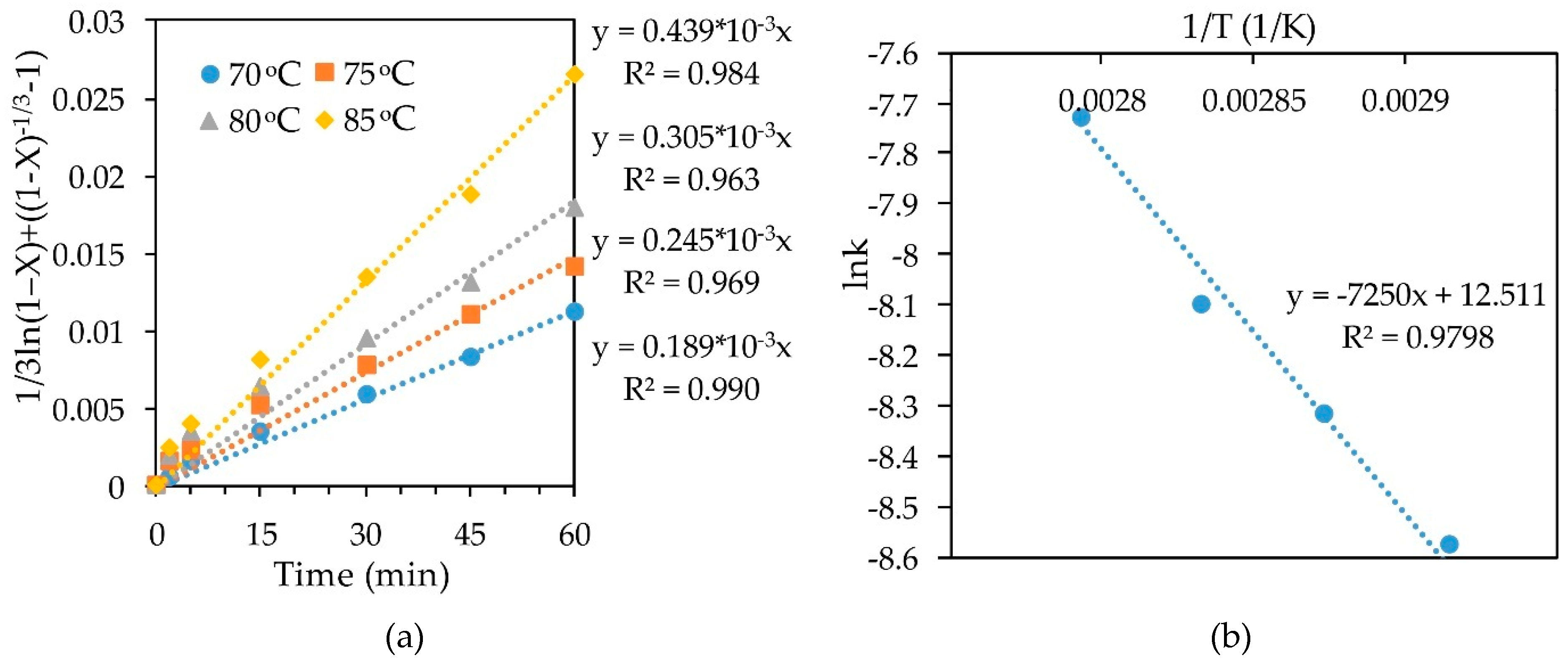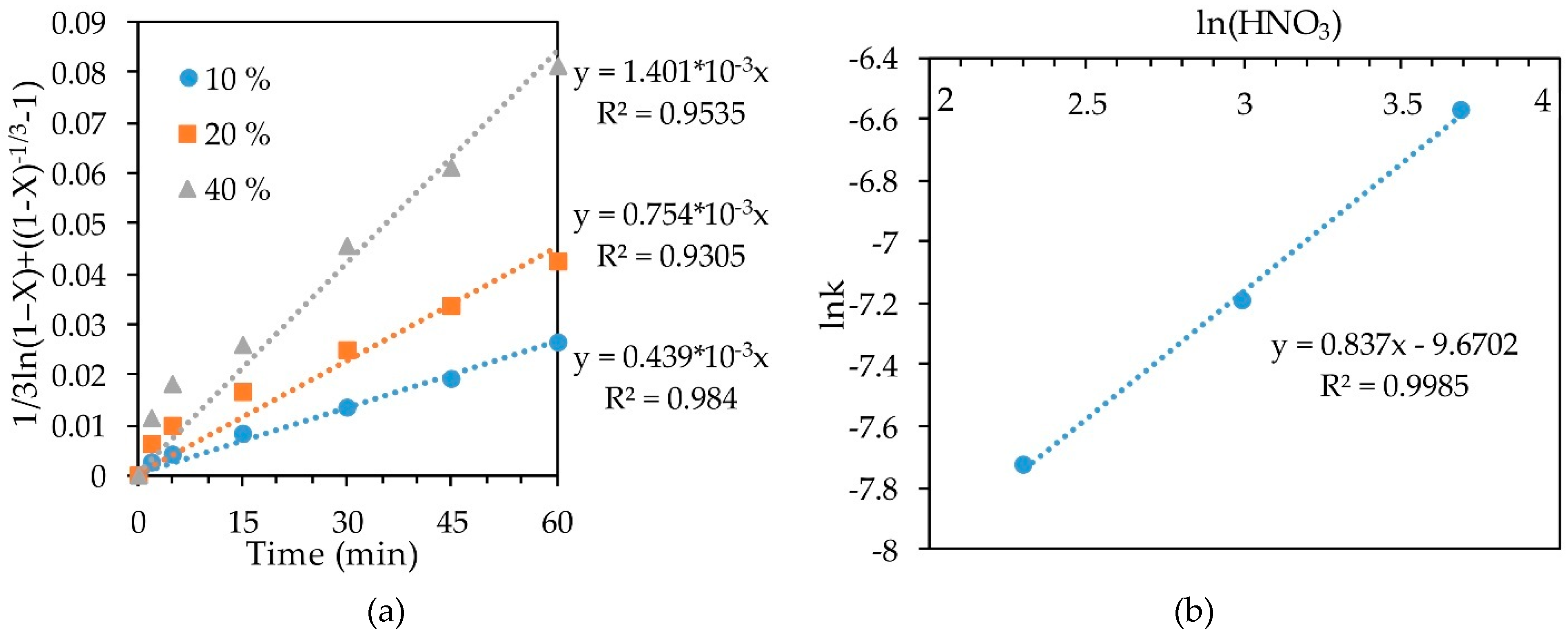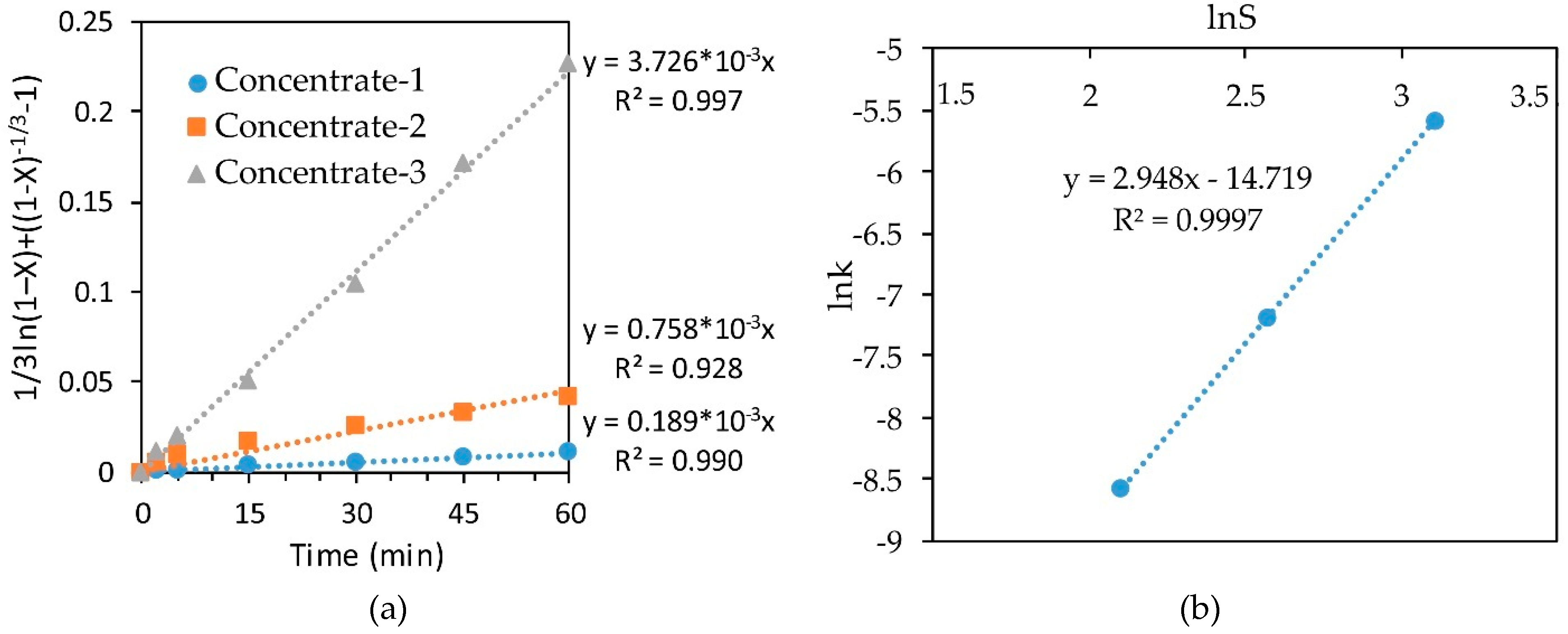1. Introduction
Russia possesses large reserves of gold—more than 14 thousand tons—which exceeds the reserves of the world’s main producers, China and Australia, and is slightly inferior to South Africa and Canada. The Russian Federation accounts for 8% of the total world gold production and is among the three largest global producers of the precious metal. Gold-sulfide-quartz and gold-arsenic-sulfide deposits occupy a leading position in the structure of Russia’s reserves; the quality of ores is comparable to the world objects of this type [
1]. Very important are gold-polysulfide deposits, characterized by relatively high concentrations of gold (3.5–7 gpt).
At the same time, there is a global problem in the metallurgical industry that the quality of processed raw materials is deteriorating due to the depletion of mineral reserves and the extraction of the richest and most easily extractable ore layers. As a result, there is a need to engage poorer and more refractory ores, which are often not amenable to traditional enrichment methods.
The deterioration of ore quality, especially with the transition to the production of lower horizons, occurs in terms of reduction of metal content as well as in terms of increasing proportion of ores with fine and emulsive impregnation of sulfides in one another and the latter in waste minerals.
The share of gold ores of non-ferrous metals, where gold is an associated valuable component, accounts for 18% of the global reserves [
2]. Among them, a special place belongs to ores from which gold cannot be extracted by traditional technologies.
Refractory gold-containing ores refer to materials, the extraction of gold from which by cyanidation is low or requires significant amounts of energy and reagents [
3].
Currently, it is considered proven that the refractory characteristics of gold associated with sulfides is not only due to the presence of nanoparticles of native gold [
4,
5,
6,
7], but also due to the existence of solid solution, colloidal particles, surface gold [
8,
9,
10,
11]. The size of such “invisible” gold may be on the order of nanometers, which explains why it is impossible to extract it by cyanidation, even with the use of ultrafine grinding. It has also been established that in pyrite, which is one of the main carriers of gold in refractory ores, the content of “invisible” gold is greater proportionately to the higher content of arsenic in pyrite and to the finer grain. For example, in the ores of the Twin Creeks deposit, relatively coarse-grained pyrite (10–30 µm) is associated with the lowest arsenic and gold contents (less than 1% As and 17–60 g/t Au), while fine-grained pyrites (less than 2 µm) are the highest (1–2.4% As and 600–1500 g/t Au) [
12].
Also important in the detection of “invisible” gold in pyrite grains is the uneven distribution of As and Au over the grain section. A thin peripheral layer of pyrite grain is enriched with arsenic, forming the so-called arsenic pyrite Fe(As,S)
2. It tends to contain most of the gold [
13].
The nature of the chemical bond of gold, which is in the form of a solid solution in arsenic pyrite, has not been fully established and is the subject of discussion [
12,
14].
Invisible gold may also exist in arsenopyrite in the simple form of nanoparticles (Au
0) and in the oxidized state (Au
1+), and their ratio may vary significantly. For example, in the arsenopyrite deposits Jinya (China) [
15], Elmtree (Canada) [
16], Sao Bento (Brazil) [
8] and Sheba (South Africa) [
8,
16] solid gold (Au
1+) is the predominant form as compared with nanogold (Au
0). On the contrary, arsenopyrite of the Olimpiadinskoe deposit (Russia) [
17] contains “invisible” gold mainly in the form of nanoparticles (Au
0) [
10].
Traditional methods of processing such refractory materials consist in the oxidation of gold-containing minerals (pyrite or arsenopyrite) in order to destroy their crystal lattice and release the gold particles by oxidative roasting [
18]. This process is associated with the oxidation of iron-containing sulfides and converting arsenic to the gaseous phase. At the same time, arsenic is one of the most dangerous and carcinogenic elements [
19,
20,
21,
22,
23,
24] and its content in drinking water in several countries already exceeds the concentration recommended by the World Health Organization (WHO) and the United States Environmental Protection Agency (USEPA) [
25,
26]. Therefore, hydrometallurgical methods of sulfide oxidation have been widely implemented in recent years. The most common of them are pressure and bacterial oxidation, and leaching after fine grinding [
27].
One of the possible methods of hydrometallurgical processing of refractory sulfide raw materials is the use of HNO
3 to oxidize the materials without the use of high pressure or fine grinding [
28,
29,
30,
31], as nitric acid is one of the most effective oxidizing and leaching agents [
32,
33].
Among the most famous technologies based on the use of HNO
3: NSC-process (nitrogen species-catalyzed pressure leaching), implemented in 1984–1995 at the Sunshine plant in the USA [
34]; NITROX (in atmosphere air) and ARSENO PROCESS
® (use of compressed oxygen) [
35]; a subspecies of ARSENO, the REDOX PROCESS
® (at above 180 °C to eliminate the formation of elemental S) [
36]; the HMC process (a mixture of salts of nitric and hydrochloric acids) [
37]; the Caschman process and its modification Artek Caschman, which aims to process gold-containing arsenic materials using chlorine-containing reagents [
3]. However, none of these is currently used commercially for one reason or another.
Therefore, it seems relevant to conduct further studies of alternative energy saving and environmentally efficient hydrometallurgical technologies for processing sulfide gold-containing raw materials using HNO
3. There are only a few published works devoted to the theoretical aspects of HNO
3 leaching of sulfide gold-containing concentrates [
38], which demonstrates the need for additional investigation using other types of concentrates with different mineralogical compositions. At the same time, there is a sufficient amount of work showing that various types of leaching reactions of raw materials with HNO
3 can be described quite accurately using the shrinking core model [
39,
40,
41,
42,
43], which makes it possible to obtain more data on the limiting stages of the reactions.
Considering the above factors, this paper studies the kinetics of HNO3 leaching of refractory gold-containing concentrates with the use of shrinking core models, focusing on the role of temperature, concentration of HNO3, which, in our opinion, has not been sufficiently studied theoretically or practically. Particular attention is paid to the initial content of sulfur in the raw materials as one of the most important factors affecting the intensity, completeness and kinetic characteristics of the leaching process.
